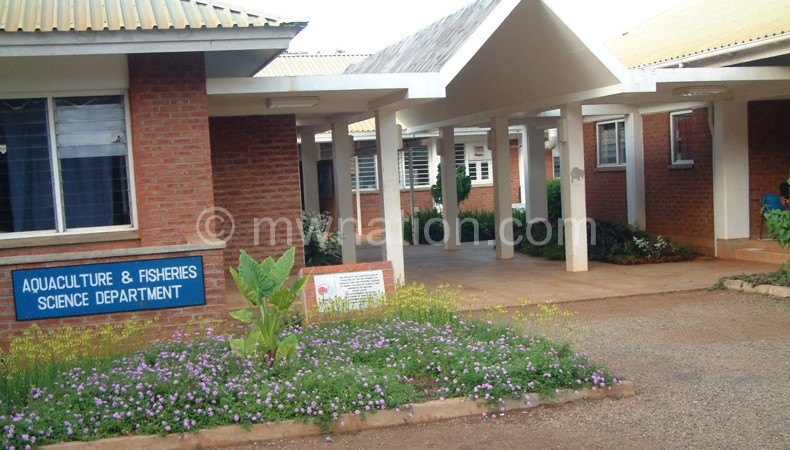Luanar’s 50-50 programmes
In 2013, Malawi ratified a regional agreement to accommodate equal numbers of men and women in decision-making positions. However, the Southern African Development Community (Sadc) Protocol on Gender and Development is a mere paperwork without increasing the number of girls and women accessing education.
Studies show that females constitute just about a third of the enrolment in public universities in the country.

On the contrary, the Gender Equality Act requires that either sex occupies no less than 40 percent of seats in public institutions.
To even it up, Lilongwe University for Agriculture and Natural Resources (Luanar) has introduced programmes which offer males and female equal chances to enrol.
The public university is taking advantage of the skills development project (SDP) funded by the World Bank to enrol more female learners through open and distance learning.
After three intakes, it seems on course to reach the 50-50 target.
The National Council of Higher Education (NCHE) system of selecting students from secondary school does not recruit the desired proportion of female learners.
Even the group left out, from which ODL draws students, is male-dominated.
According to ODL specialist Dr Precious Gawanani, Luanar formed a gender taskforce to ensure female students are no longer underrepresented in programmes.
The group, comprising academics as well as government officials and private sector representatives, recommended outreach campaigns in schools and rural communities to make girls aware of programmes Luanar offers.
“Evidenced by the number of female applicants into ODL programmes immediately after recruitment seminars conducted in remote areas and girls’ secondary schools, this seems to be working,” he says.
Luanar progress reports indicate that against a mid-term expectation of 39 percent, the university is behind by 24 percentage points.
Dr Joshua Valeta, who coordinates the skills development project at Luanar, is happy that the university is increasing enrolment through ODL.
There are 800 ODL students in four priority programmes, surpassing the target by 27 percent. This represents 92 percent of the overall project target.
The progress report, however, indicates that there are 943 direct beneficiaries of the project against a mid-term target of 800.
Female students account for 15 percent of the cohort, below half of the targeted 39 percent.
A recent study by Dorothy Nampota of Chancellor College in Zomba, shows that despite increased enrolment in higher learning institutions, female students constitutes just about a third of total enrolment in the target programmes.
These findings, titled Females’ Access to Higher Education and Student Dropout in the SDP, confirm a gaping gender disparity.
But there are “female-friendly degree programmes” where gender parity has either been achieved or is nearly achieved. They mostly include especially food and nutrition, human ecology, family sciences, biological sciences, arts and humanities, tailoring and fashion.
“Gender parity in non-traditional programmes still remains a challenge,” Nampota reported in June.
The new evidence reveals that up to 10 percent of the students selected into the priority programmes dropout each year due to academic underperformance and other setbacks. The number withdrawn on academic grounds is higher in degree courses.
“However, for the newly introduced diploma programmes, lack of tuition fees is the main cause followed by fail-and-withdrawal. This is because the latter are not eligible for government loan scheme,” she said.
Some female students fail examinations and get withdrawn because the 50-50 policy of selecting students to public universities recruits female students based on relatively weaker credit passes than their male counterparts.
Despite this affirmative action, male and female students attend the same classes and sit the same examinations once selected.
Besides, NCHE’s re-direction policy pits students into programmes they did not choose. With no interest and aptitude, they fail to cope with the imposed programmes.
According to Nampota, this mainly affects female students who are usually selected from the bottom of the merit list after their chosen programmes are filled.
They have difficulties to settle down in the higher learning environment and cope with academic demands.
Even the teaching methods and subjects taught in secondary schools do not adequately prepare them for the priority programmes. For instance, technical drawing is mostly taught in boys’ schools.
To improve access and retention of females at tertiary levels, Nampota recommends the introduction of technical drawing in all schools to avoid excluding females.
Valeta says Luanar is determined to equalise the female-male ratio.
“We are intensifying study circles and counselling through centres. We are also lobbying for quota for SDP (ODL) students at the Higher Education Students’ Loans and Grants Board to reduce the dropout rate and gender gaps,” he said.





